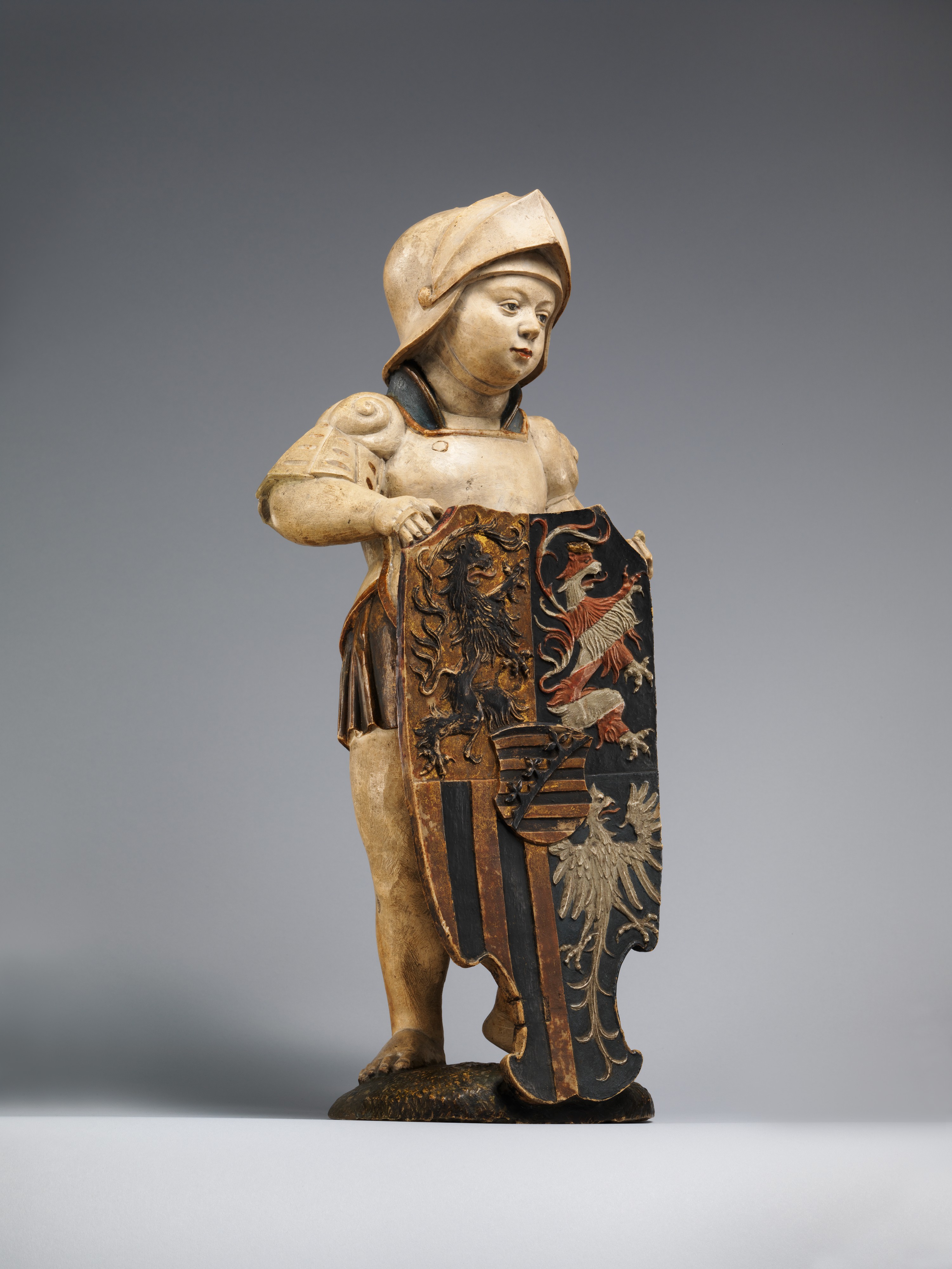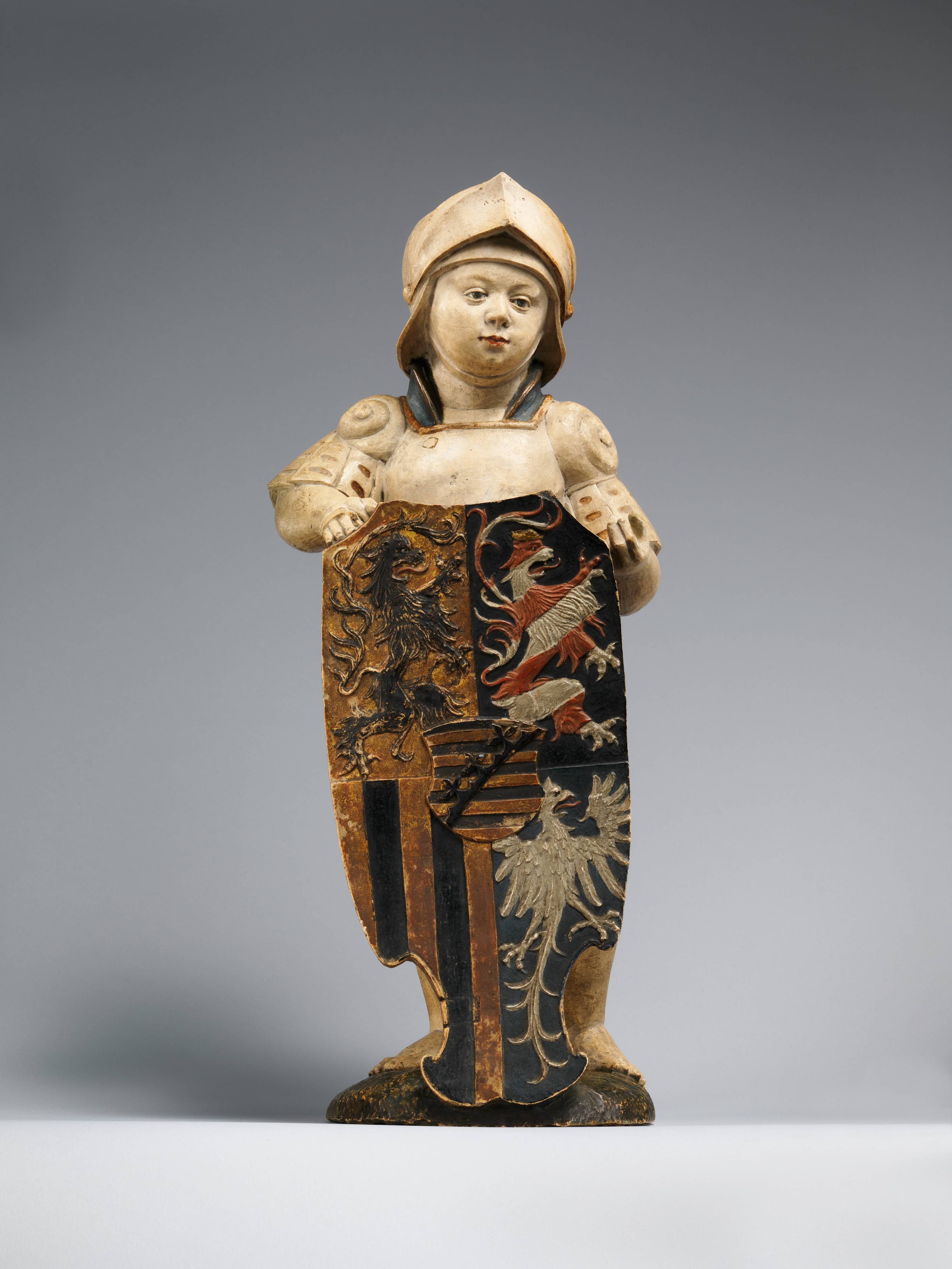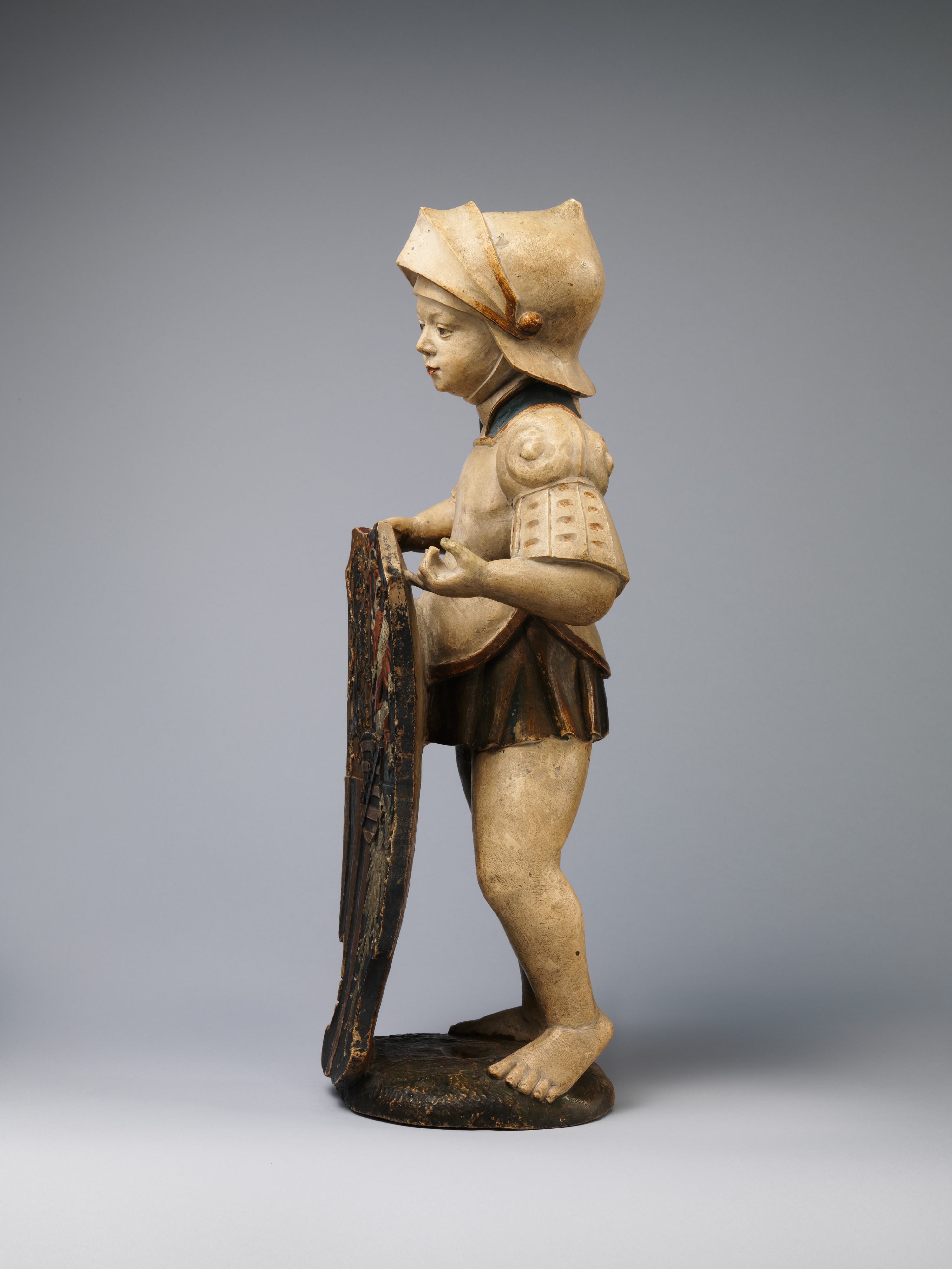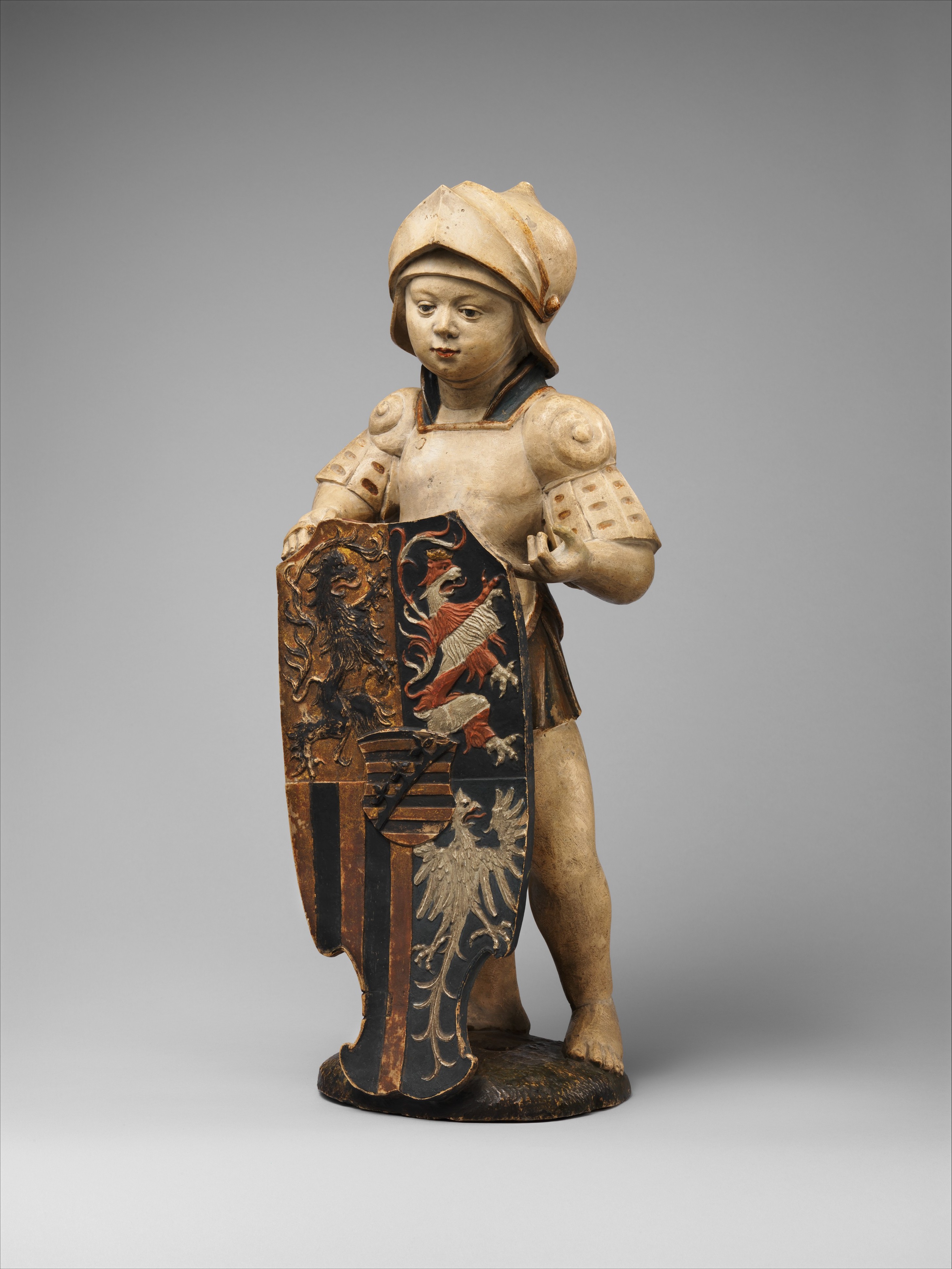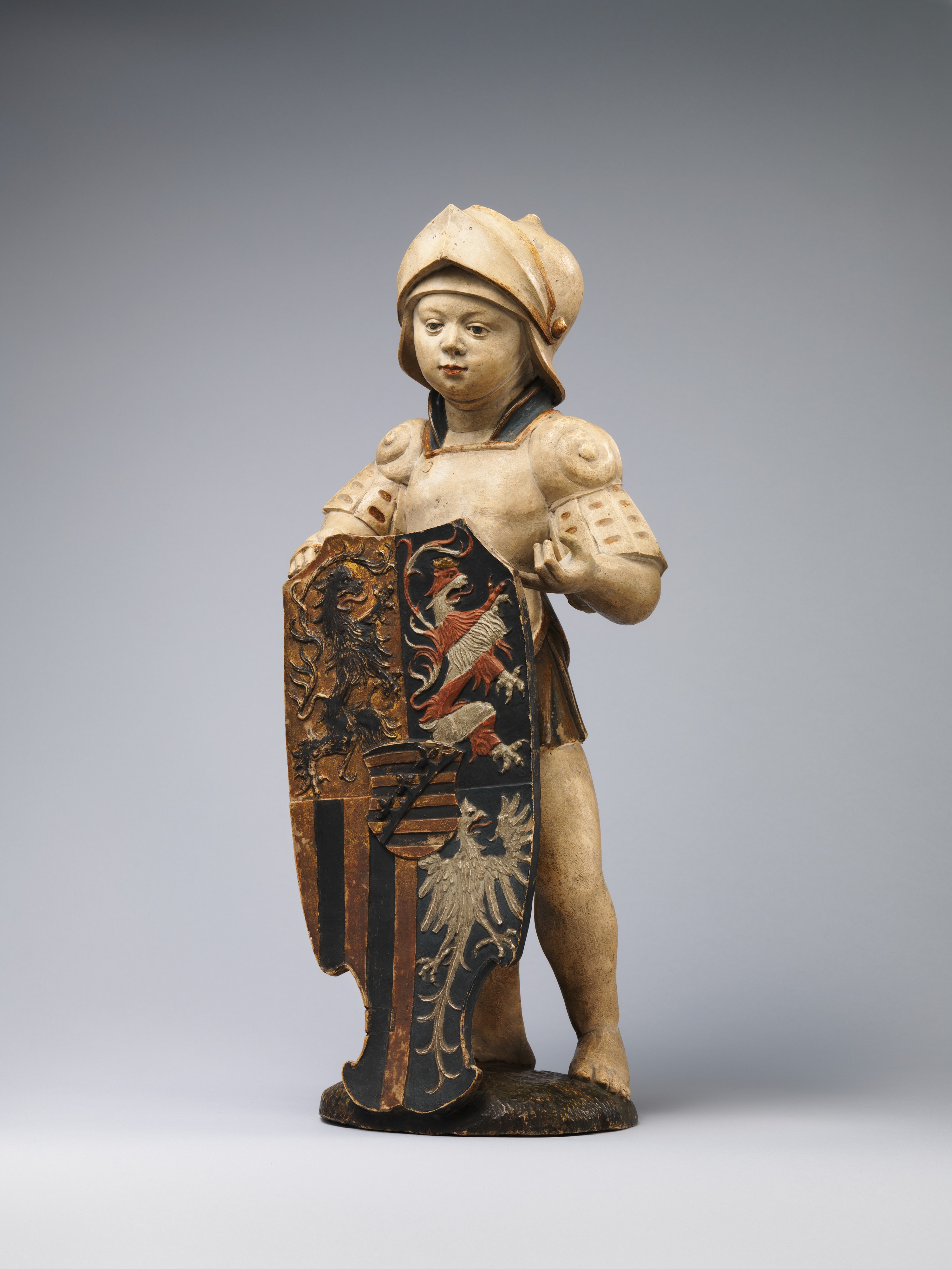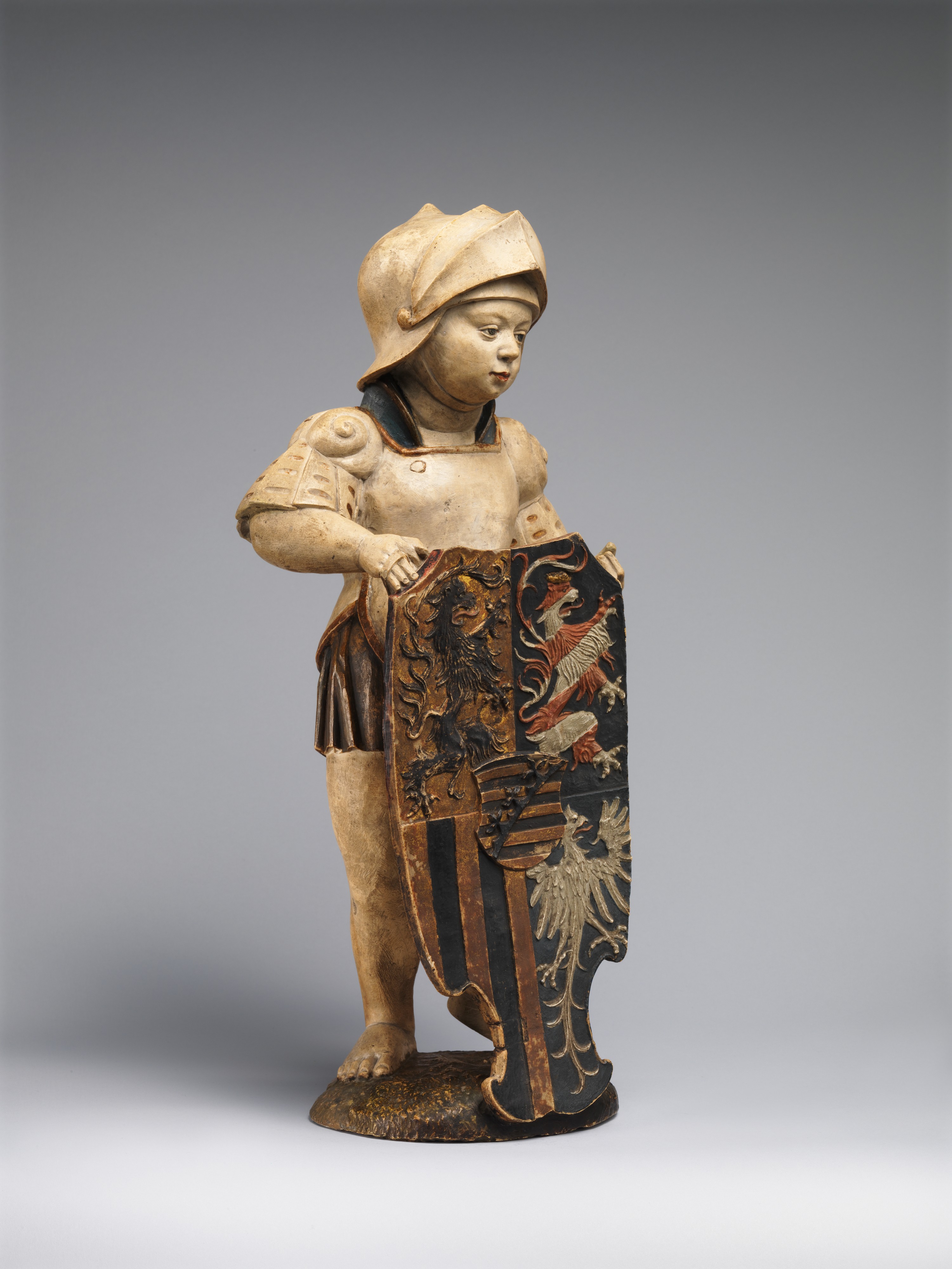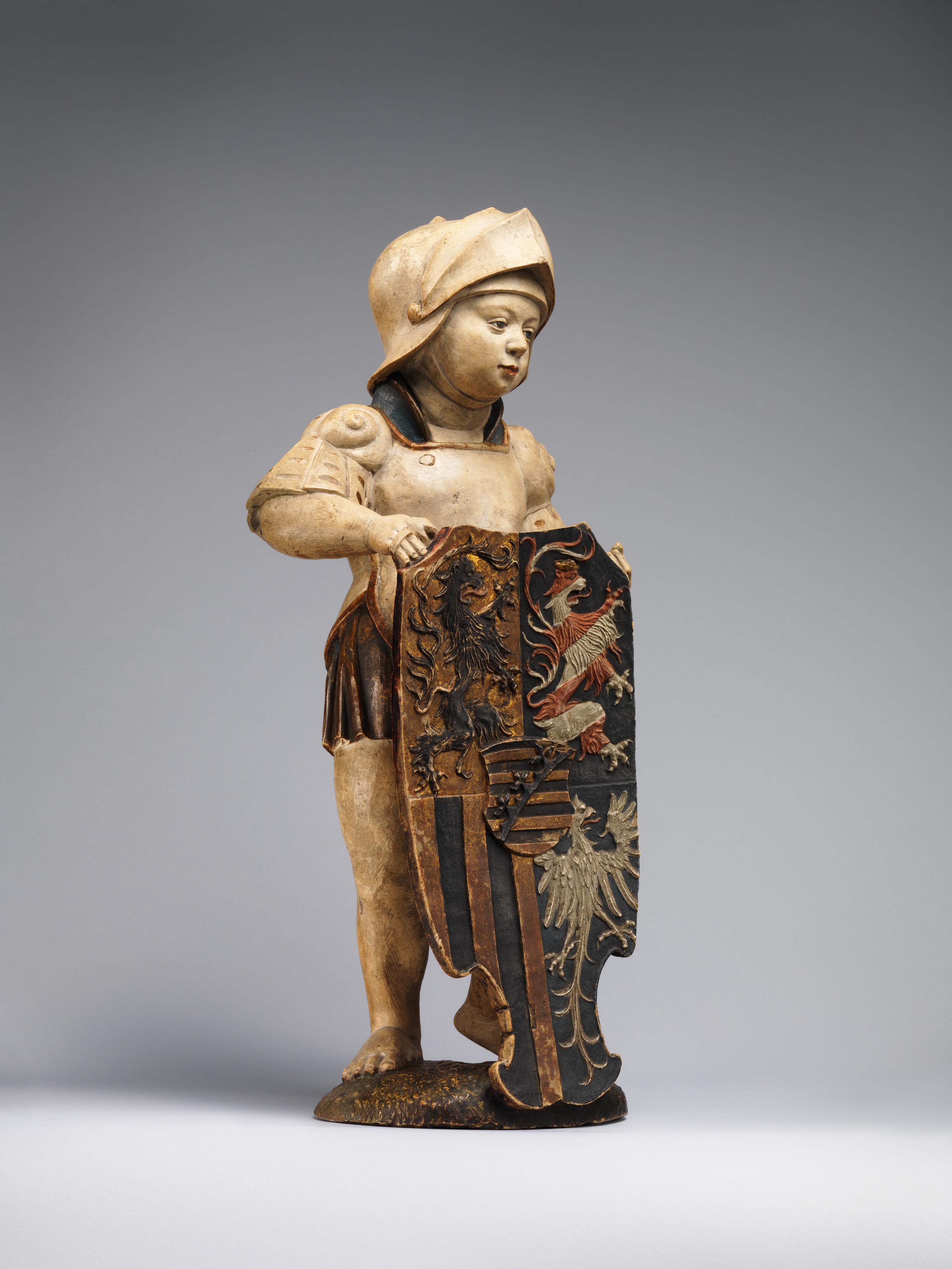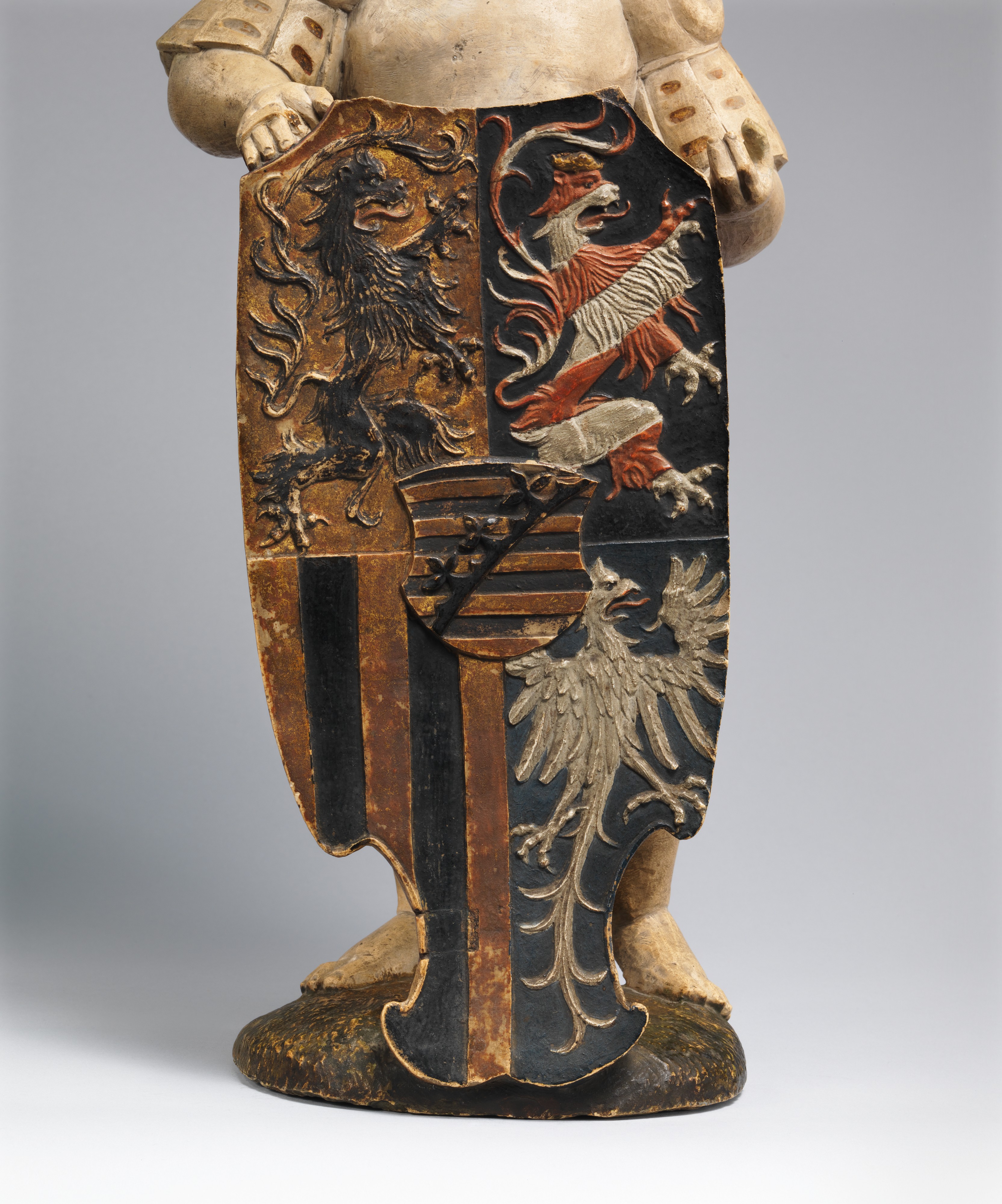Shield Bearer with the Ducal Arms of Saxony
Designer Hans Daucher German
Not on view
The elegant lines of this youthful figure complement the vividly painted heraldic shield he supports. This boy wears contemporary armor fancifully embellished with turbot-shell shoulder pieces (pauldrons) and with leather straps covering the upper arms, a detail borrowed from ancient armor. He stands on a tiny hillock; his fingertips balance the top of the shield, whose base rests on the ground. Fine-grained Jurassic limestone, quarried near Solnhofen, north of Augsburg, has been cut and polished to render the lad’s sleek limbs and finely wrought armor, but selected elements—eyes and lips, collar, skirt, and base—have been accented with color; the shield is entirely painted.
Museum curator Wolfram Koeppe has convincingly traced the origins of this sculpture, while confirming the attribution to Hans Daucher, made when it appeared on the market in 1972 and again in 1997– 98.[1] Hans Daucher is documented as having designed— and with his father, Adolf Daucher, helped to execute— the portal of the ducal chapel in Meissen Cathedral. Letters between George the Bearded, last Catholic ruler of Albertine Saxony (1471–1539), and Adolf Daucher indicate that Duke George commissioned an entrance portal for his chapel about 1518–19.[2] The elements of the structure were delivered from Augsburg to Meissen in 1521 and installed about 1524.[3] Five meters high, the portal consists of an arched limestone doorway, flanked by serpentine columns, whose double cornice supports a relief of the Lamentation framed by smaller columns and crowned by a low, shell-shaped semicircle. During renovations undertaken between 1856 and 1865, the portal was shifted to the inside wall of the chapel, but it was restored to its original position outside the entrance in 1977.[4] The Meissen antiquarian Richard Steche wrote in 1885 that two putti holding armorial shields of Duke George and his spouse once crowned the columns of this portal, adding that they resemble those topping the high altar in the Sankt Annenkirche, Annaberg-Bucholz, completed by the Daucher atelier in 1522.[5] These two Meissen Shield Bearers must have been removed by 1919, as there is no mention of them in a scholarly record of old buildings and monuments in Saxony published that year.[6] There is little doubt that the Museum’s sculpture is one of the two; the location of the other is unknown.
Hans Daucher was one of a talented group of Augsburg sculptors that included his teacher Gregor Erhart. Several putti by Daucher share characteristics of the Museum’s example. In addition to the two on the high altar of the Sankt Annenkirche (1518–22) and a Young Hercules on the balustrade of the Fugger Chapel in the same church (ca. 1530), there is a Sleeping Putto attributed to Daucher in the Städtische Kunstsammlungen, Maximiliansmuseum, Augsburg (ca. 1520–30).[7] All of them bear similar facial features and, save the Sleeping Putto, wear comparable armor. The related examples are winged, but the Museum’s has filled-in holes in the back that likely once supported wings of lead or wood.
Such figures have Italian prototypes, as Koeppe noted, for example, those carved by Desiderio da Settignano for the monument of Carlo Marsuppini, in the church of Santa Croce, Florence (after 1453).[8] When placed before the ducal chapel, the Shield Bearers acted as pages, presenting the lord’s coat of arms and standing like sentinels before a sacred precinct. As Koeppe has pointed out, in their original location the Shield Bearers would have marked the portal’s peak, softening its hard and somewhat ungainly form; the bearings on their shields echoed the ducal arms seen below in the Lamentation relief and over the door, leaving no doubt about the identity of those commemorated within the chapel.
[Ian Wardropper. European Sculpture, 1400–1900, In the Metropolitan Museum of Art. New York, 2011, no. 17, pp. 60–61.]
Footnotes:
1. Wolfram Koeppe. "An Early Meissen Discovery: A Shield Bearer Designed by Hans Daucher for the Ducal Chapel in the Cathedral of Meissen." Metropolitan Museum Journal 37 (2002), pp. 41–62.
2. Felician Gess. Akten und Briefe zur Kirchenpolitik Herzog Georgs von Sachsen. Vol. 1. Leigzig, 1905, p. 231.
3. Hans-Joachim Krause. "Die Grabkapelle Herzog Georgs von Sachsen und seiner Gemahlin am Dom zu Meissen." In Das Hoschstift Meissen: Aufsätze zur sächsischen Kirchengeschichte, edited by Franz Lau, pp. 375–402. Berlin, 1973, p. 387.
4. Heinrich Magirius. "Die denkmalpflegerische Wiederherstellung des Westportals und der Fürstenkapelle, 1974-1996." In Elisabeth Hütter, Günter Kavacs, Michael Kirsten, and Heinrich Magirius, Das Portal an der Westturmfront und die Fürstenkapelle, pp. 415–22. Forschungen und Schriften zur Denkmalpflege, vol. 2, pt. 1. Forschungen zur Bau- and Kunstgeschichte des Meissner Domes 1. Halle, 1999, p. 415.
5. R. Steche. Beschreibende Darstellung der älteren Bau- und Kunstdenkmäler des Königreichs Sachsen. Vol. 4, Amtshauptmannschaft Annaberg. Dresden, 1885, p. 33.
6. Cornelius Gurlitt. Beschreibende Darstellung der älteren Bau- und Kunstdenkmäler in Sachsen. Vol. 40, Meissen (Burgberg). Dresden, 1919, pp. 209 – 11.
7. See Koeppe 2002, figs. 6, 31, 32.
8. Ibid., p. 58, fig. 28.
Due to rights restrictions, this image cannot be enlarged, viewed at full screen, or downloaded.
This artwork is meant to be viewed from right to left. Scroll left to view more.



